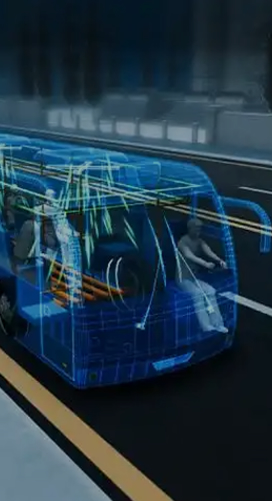Solution
-

-
Smart Public Transport Solution
The smart public transportation solution utilizes modern information technology to comprehensively enhance the intelligence level, operational efficiency, service quality, and passenger experience of the public transportation system, and is committed to creating a convenient, efficient, and green urban public transportation mode< In terms of intelligent scheduling, real-time data such as vehicle location, speed, and passenger capacity are collected through GPS positioning systems installed on public transportation vehicles, onboard sensors, and intelligent terminals at bus stops, and transmitted to the public transportation dispatch command center. By utilizing big data analysis and intelligent algorithms, the dispatch center can dynamically optimize bus routes, adjust departure intervals, and achieve precise scheduling based on real-time road conditions, passenger flow changes, and other factors. For example, increasing the frequency of popular routes during peak hours and reducing transportation capacity during off peak hours can effectively improve the utilization of public transportation resources and reduce passenger waiting time< The passenger service experience has been significantly improved. With the help of mobile applications, passengers can query information such as bus routes, real-time vehicle locations, and arrival times, and plan their travel routes and times reasonably. Public transportation vehicles are equipped with intelligent electronic stop signs and in car display screens, which display real-time station information, transfer suggestions, etc., making it convenient for passengers to understand their itinerary. In addition, some smart buses also support convenient payment methods such as mobile payment and facial recognition for ride hailing, further enhancing the convenience of transportation< Vehicle management and maintenance are becoming more intelligent. The Internet of Things technology can monitor key components of public transportation vehicles in real time, warn of potential faults in advance, facilitate timely maintenance arrangements, and ensure the safe and reliable operation of vehicles. At the same time, by analyzing vehicle energy consumption data, optimizing driving strategies, reducing energy consumption and environmental pollution< In the long run, smart public transportation solutions can help attract more citizens to choose public transportation, alleviate urban traffic congestion, reduce exhaust emissions, promote sustainable urban development, and build a more harmonious and intelligent urban transportation system
